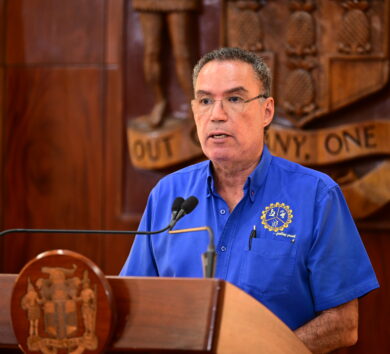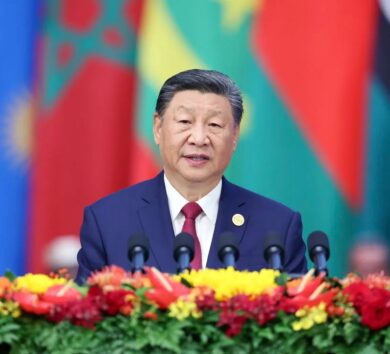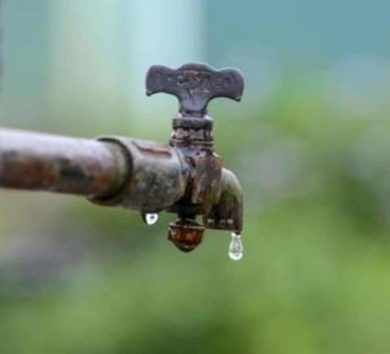

A recent report from the Institute for Energy Economics and Financial Analysis (IEEFA) has painted a dismal picture of New Fortress Energy’s (NFE) progress in expanding the use of natural gas around the world, with the Institute citing what it suggested were a number of “red flags” that would be “perilous” to ignore.
In its February 2022 report, the IEEFA, an independent think tank that examines issues related to energy markets, trends and policies, noted that NFE’s promise to investors that it would develop five to 10 new liquefaction facilities by 2024 was unlikely to materialise as it currently owns just one small liquefaction plant in Miami, Florida.
“Since November 2018, the company has not acquired or demonstrated substantial progress on any new liquefaction assets,” the IEEFA said.
“The failure to build liquefaction assets exposes the company and its customers to market and price risks.”

In addition, according to the Institute, the sales growth from the natural gas supplier’s more mature assets in Puerto Rico and Jamaica have been slow to materialise and the company’s utilisation rates have been far below both the market average and maximum capacity levels.
At the same time, the IEEFA took note of the January 2022 revelation that NFE had changed plans for financing its Clarendon-based power plant in Jamaica, from a sale and leaseback arrangement, through which the energy company was seeking US$285 million (J$44.5 billion) to fund its expansion in other geographic markets in Latin America, to raising debt by floating bonds on the capital market through subsidiary NFE South Power Holdings Limited while continuing to own the asset.

Sagicor Group Jamaica had announced in June 2021 that it would be structuring the US$285-million sale and leaseback, taking an equity stake of US$100 million while acting as lead arranger for the balance of US$185 million.
By last January, however, Sagicor said it was instead investing US$100 million in a bond issued by NFE South Power Holdings Limited and would be arranging and brokering the sale of the remaining US$185 million of the US$285-million bond offering.

At the time, a report in Jamaica’s Financial Gleaner stated that Sagicor Group President and CEO Christopher Zacca had pointed to “global market conditions” as influencing both the seven-month timeline for closing the deal and being among the possible reasons for the change in the structure of the financing.
According to the IEEFA, the change in its financing plan meant NFE had lost an opportunity to reduce debt levels that have been increasing as the company has added assets.
Pointing to additional concerns, the Institute noted that consumers in Jamaica and Puerto Rico have experienced significant electricity price increases linked to the electric grid’s dependence on natural gas and that, in New Jersey, Pennsylvania and Puerto Rico, community concerns have resulted in litigation by or with the Federal Energy Regulatory Commission (FERC) and significant delays in a priority liquefaction project.
“An NFE project in Ireland faces considerable opposition from political and community organisations,” the IEEFA added.
Said the Institute: “From a climate perspective, NFE’s rationale is bankrupt. The Intergovernmental Panel on Climate Change (IPCC) and International Energy Agency (IEA) have sounded alarms that the world cannot afford more new oil and gas projects. Major financial institutions are warning community and national governments to think twice about overexposure to natural gas. Market and policy analysts emphasise the expanding need, desirability and affordability of renewable energy investments. For the most part, NFE’s natural gas planned facilities are unnecessary, unwelcome and unaffordable.”

The Institute further argued that NFE’s presence in the market created what it called “a risky financial and dysfunctional economic dependence on natural gas as a future resource for host nations and communities”.
In most instances, the Institute said, NFE’s new projects expose host communities to higher electricity prices and undermine efforts to build cheaper, more reliable and environmentally sound renewable energy.
“Often, investors and host communities where the company has set up shop have not seen promised investment results, fiscal or consumer savings. In Puerto Rico, one of NFE’s successful projects, the company’s upgrade of a local power plant and delivery of LNG has not resulted in promised budget savings for Puerto Rico’s public utility,” the Institute said.
“In its facilities in Jamaica, NFE’s business performance is marginal and natural gas prices have been cited as a cause of serious inflationary pressures. After four years of operation at its first and only liquefaction plant in Miami, the company has seen— at best—a 35 per cent utilisation rate in the US market where facilities normally achieve more than 90 er cent.
“In places where the company is expanding such as Mexico, substantial market warnings to the government and investors that the country is overbuilding its natural gas capacity are being ignored.
“In Brazil, where NFE has taken a big bet on natural gas, there are serious questions about inflationary pressures.”

The Institute said NFE has struck agreements in Nicaragua and Sri Lanka, both countries facing high levels of political and economic uncertainty, and where natural gas market volatility can only compound existing political and fiscal tensions.
Also, in Pennsylvania and New Jersey, dozens of local city councils have expressed safety and health concerns, the Institute stated.
“Citizen groups cite serious risks from natural gas transport are being met by the company with attempts to dodge responsible oversight of their plans to develop new processing plants, shipping logistics and terminals,” the Institute said.
“In Ireland, the company’s recent attempt to revive an infrastructure project resurrected substantial opposition. Ireland recently issued a moratorium on new natural gas infrastructure projects and adopted a national Climate Action Plan that maximises renewable energy.
“At the end of the third quarter of 2021, the company showed a US$19 million gain, its first gain since 2016.
“The positive financial news driven by higher natural gas prices, volume sales and new assets in Brazil was met by improved ratings from credit agencies and a new stock issuance.
“The company also experienced growing expenses from rising natural gas prices, development outlays and interest payments from rising debt levels.”







Comments